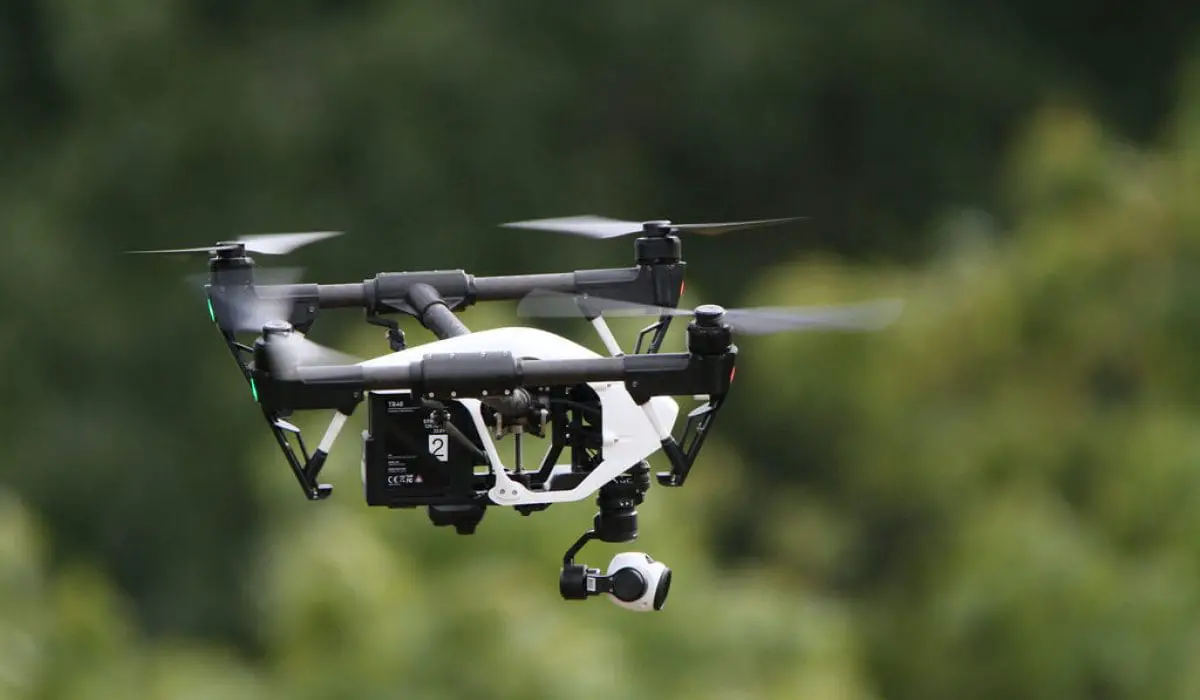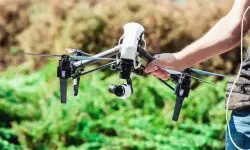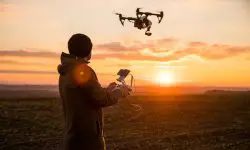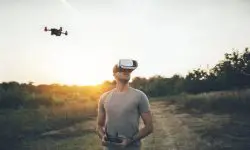As an Amazon Associate I earn from qualifying purchases.
Drone racing and virtual reality have been linked since very early on in the rise of modern drone technology. This is simply because at a certain level, VR or something akin to it is more or less required for piloting. Even drone pilots looking down at screens rather than wearing goggles are effectively simulating the idea of being in the “cockpits” of the drones they’re controlling.
Naturally, it’s for this reason that there are already VR apps for pilots, and other apps that could easily be shifted into VR from ordinary mobile form. However, while these apps do already exist, it’s also fairly clear that there is plenty of ground left uncovered where these technologies – racing drones and VR – intersect.
Most notably, if we forget for a moment the idea of VR apps meant to help pilots, there is tremendous potential for VR drone racing apps made instead of viewers. Watching a drone race from the outside looking in can be fun, and is still a novel form of recreation for most of us, but fundamentally it also means watching a bunch of tiny contraptions distinguished only by multicolored lights zipping around at a speed that’s difficult to track. With VR, the viewing experience can become a lot more exciting. Indeed, Red Bull noted in an article on drone racing and tech that spectators at live events can see what the pilots see by watching through FPV goggles. But how close are we really to making this a more widespread activity? How close is VR to offering at-home viewing experiences such that people can tune in and “fly along” with drones being raced at facilities and courses around the world?
Live sports viewing is perhaps the most natural parallel, and it’s another idea that is in its early stages of VR development. The idea is clearly an exciting one for fans, though it’s said that some of the first experiences still had a few kinks to work out. Basically though, VR sports viewing apps are expected to allow people sitting at home to choose seats at different events and in various arenas, strap on headsets, and watch live competition from the vantage points of those seats. In some cases, these apps may even have social components, meaning people could watch live sports with friends from anywhere else in the world as if they’re sitting together at the game.
Another parallel comes from casino gaming, where we’ve seen surprisingly little VR adaptation to this point, but where there are clear in-roads to simulated live experiences. Online casinos actually already make use of brick-and-mortar casinos that are dotted around the world to establish video feeds to living dealers to make games more realistic. This form of gaming’s evolution to VR will effectively mean gamers putting on headsets in order to be transported to real gaming facilities, such that they can experience games in first person rather than through screens.
Considering these examples, the idea of drone racing spectatorship through VR doesn’t even seem particularly revolutionary. However, it hasn’t reached the level we anticipate it ultimately will just yet. VR needs to involve crisper and more powerful streaming, and the headsets need to be more widespread, for this to become a significant application. If and when those things happen though, the link between drone racing and VR could be what turns drone racing into a major sport.
Amazon and the Amazon logo are trademarks of Amazon.com, Inc, or its affiliates.




